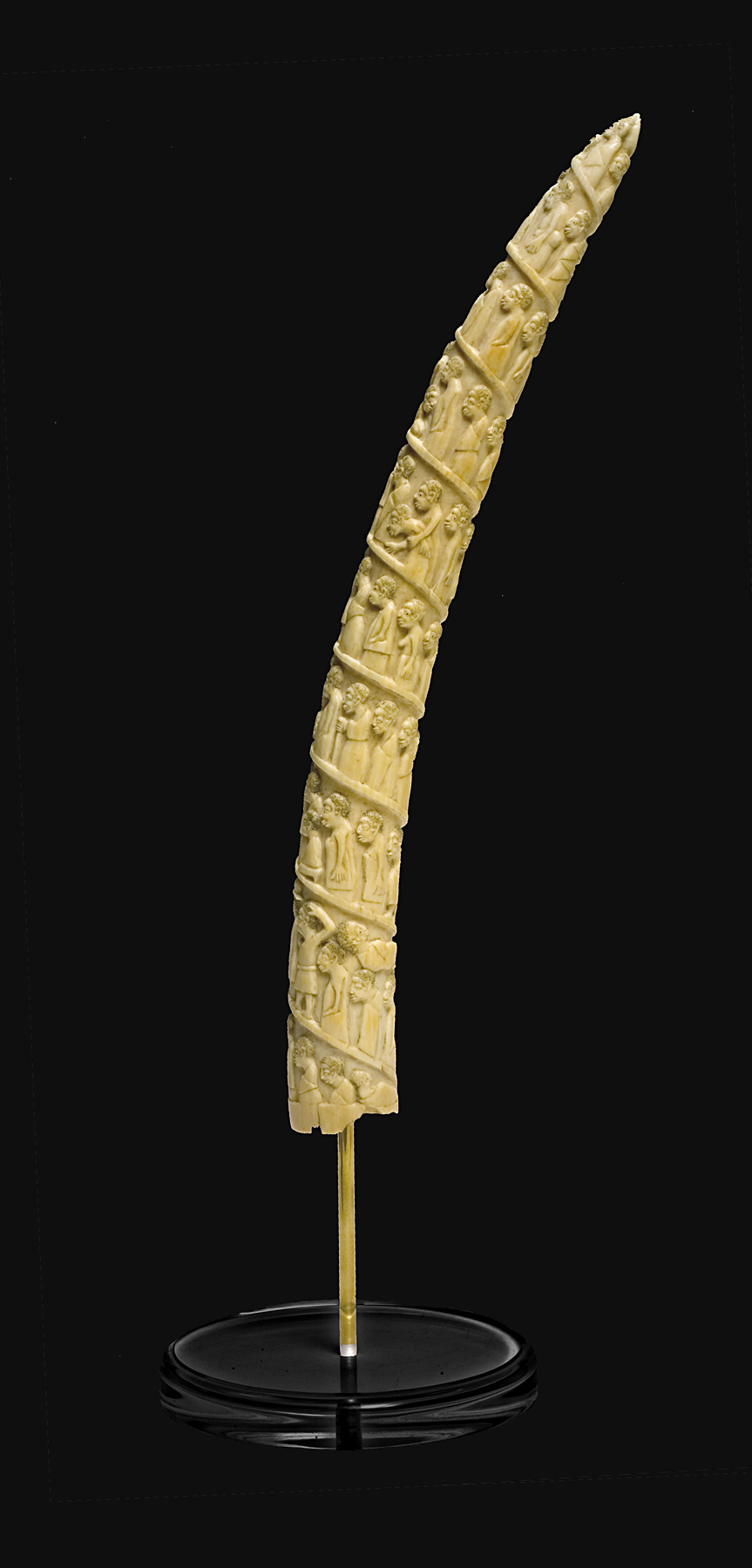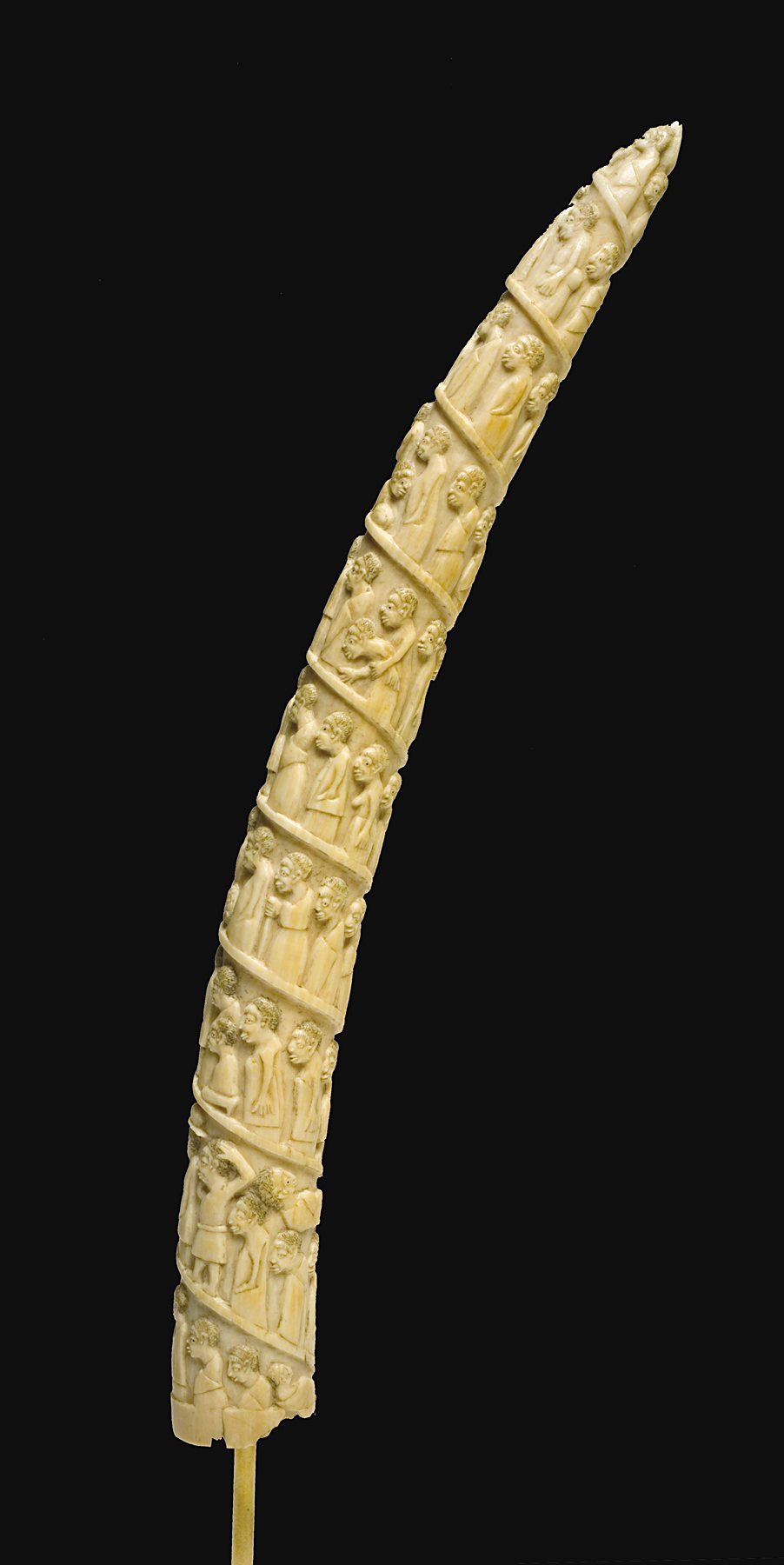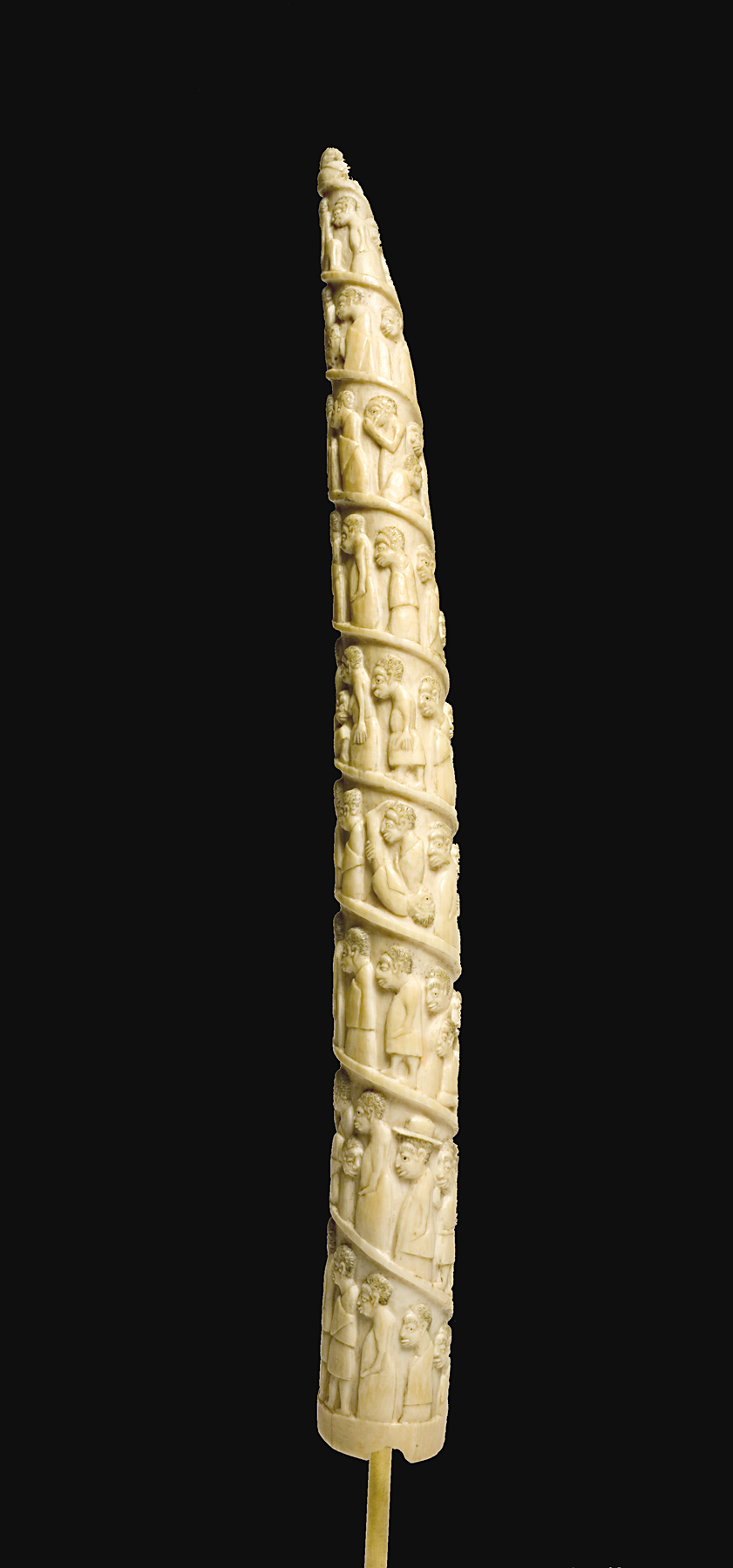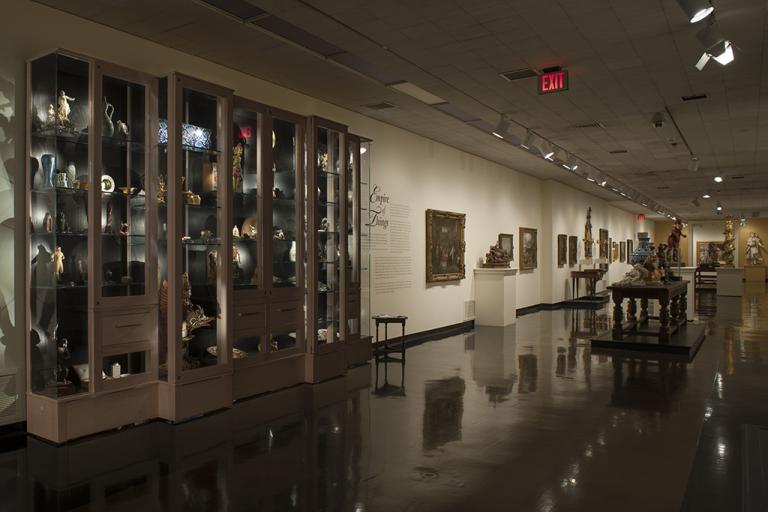carved ivory tusk, unrecorded Kongo artist
Artwork Overview
unrecorded Kongo artist, artist
carved ivory tusk,
circa 1900
Where object was made: Loango Coast, French Congo (present-day Republic of the Congo)
Material/technique: ivory; carving; pigment
Dimensions:
Object Length/Diameter (Length x Diameter): 40 x 4 cm
Object Length/Diameter (Length x Diameter): 15 3/4 x 1 9/16 in
Object Length/Diameter (Length x Diameter): 40 x 4 cm
Object Length/Diameter (Length x Diameter): 15 3/4 x 1 9/16 in
Credit line: Gift of Wolfgang and Susan Hamburger
Accession number: 2007.1814
Not on display
If you wish to reproduce this image, please submit an image request

















